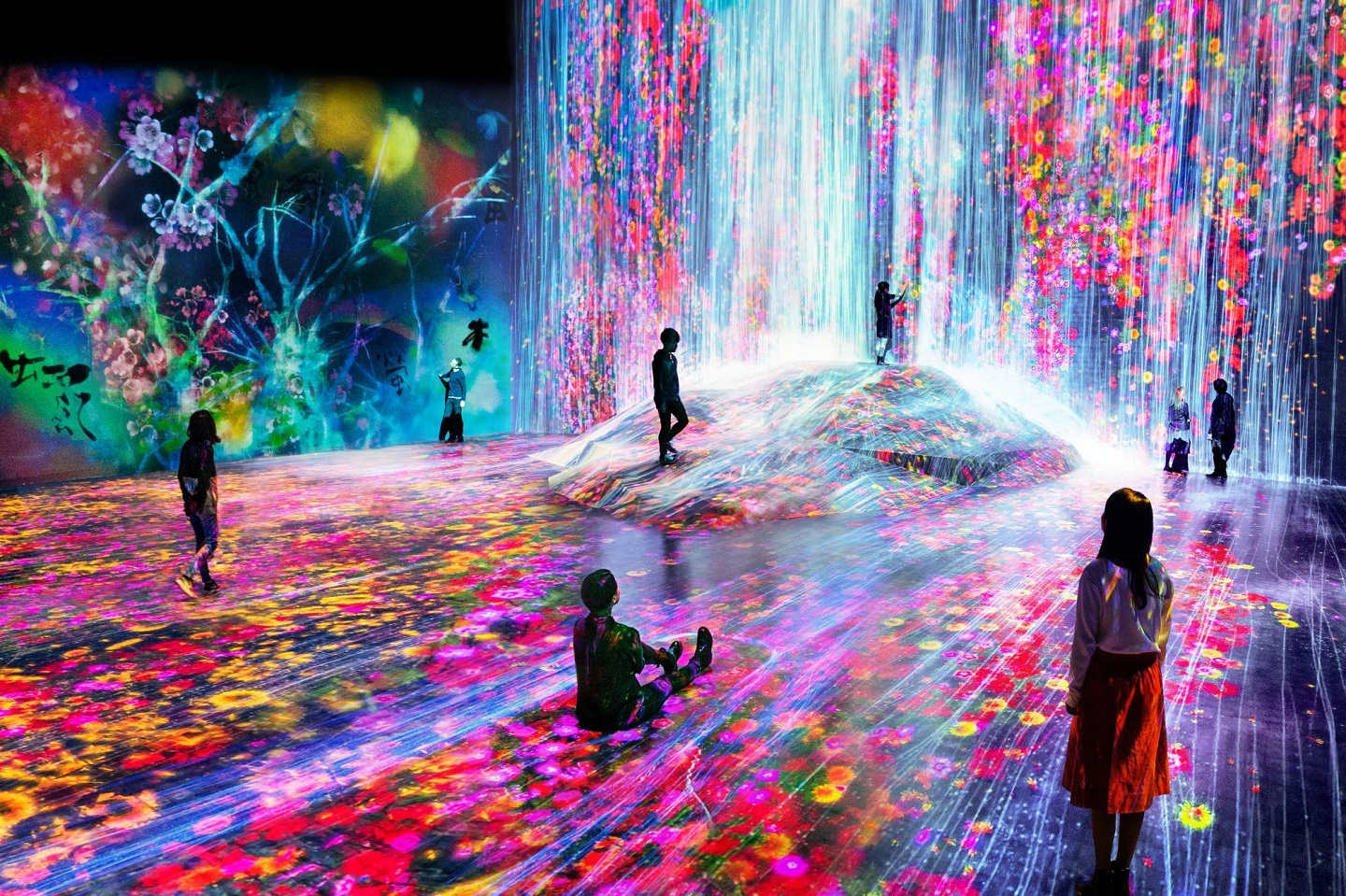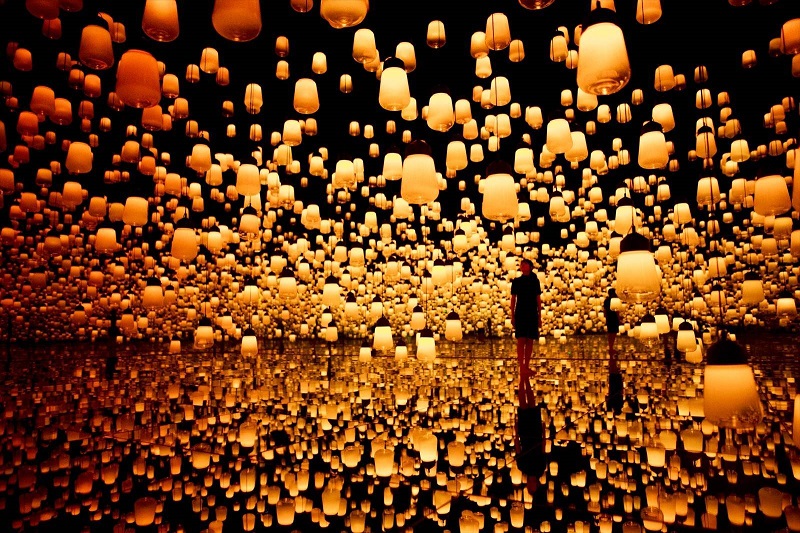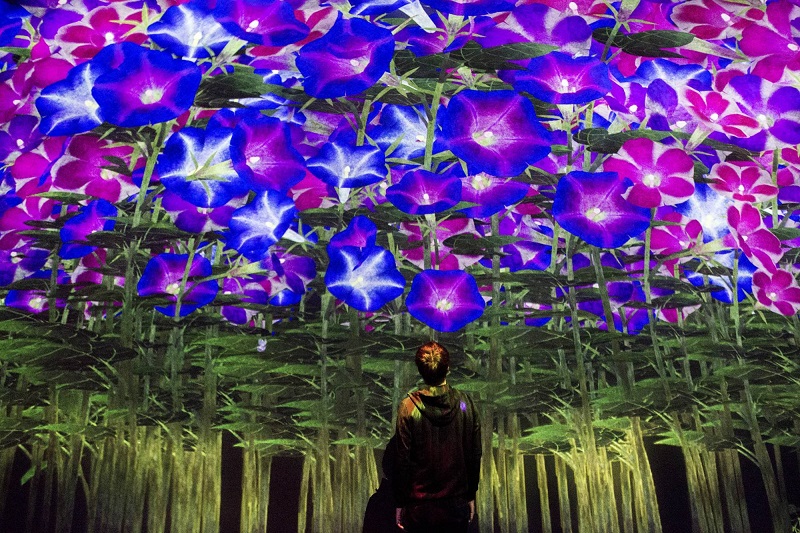
The Mori Building Digital Art Museum in Odaiba, Tokyo, is a collaboration between Tokyo-based urban developer Mori Building and teamLab (Photo: teamLab)
[Updated: Mar 2, 2019]
From now until April 30, the museum will turn pink in celebration of the sakura season. This limited-time special is called 'One Stroke, Cherry Blossoms', and it will take over the Forest of Resonating Lamps room.
---
The advent of digital art has turned the notions of what art can be and the experience of art on its head. Not since the introduction of the camera has anything been able to redefine the possibilities of art in such a significant way. Working with light, pixel and audio, or even code, today’s digital artmakers push the boundaries of creativity to create mesmerising works that fuse art and technology.
No longer relegated to the fringes of the art world, digital art has come into its own. In 2018, at least three museums dedicated to digital art opened their doors. First is L’Atelier des Lumières in Paris, a digital museum of fine art operated by Culturespaces, a French museum foundation that specialises in immersive art displays. In November 2018, Culturespaces opened a similar centre in Jeju, South Korea, called the Bunker de Lumières. The foundation is reportedly building another one in the US, slated to open this year.
The Mori Building Digital Art Museum in Odaiba, Tokyo, the subject of this review, is a collaboration between Tokyo-based urban developer Mori Building and teamLab, an art collective comprising an interdisciplinary group of artists, programmers, engineers, CG animators, mathematicians and architects. teamLab has, over the years, shown various installations in notable galleries in Taipei, Istanbul, Singapore, New York, London and Beijing.
Now, at its first ever museum, you can experience all of teamLab’s innovative and interactive creations, which are built on ideas in their previous works. They are all spellbindingly immersive, inviting the viewer to be a part of the work, to actively engage with it or quietly contemplate its beauty.

The 10,000 sq m museum is divided into two main black boxes, with a number of smaller rooms to the side and on an upper floor. Be forewarned that the layout feels like a maze and some of the rooms can be hard to find. Be sure to allocate plenty of time if you want to see and experience everything (we encountered lines for some of the rooms the day we were there).
teamLab prides itself on creating artworks that are “borderless” and that are anything but static. A bewildering profusion of colours greets me upon entering the black box — a fairyland of flowers, petals and butterflies, fluttering to the soundtrack of electronic mood music. I reach out and touch the images, and to my delight, the butterflies “pop” in response. Suddenly, I feel like a child again, and I go about touching the projections with abandon and, yes, smiling at the silliness of it all. Not everything responds, of course, but when you find ones that do — such as the kanji characters that magically make a beeline for your hand that is placed on the wall, or the frog that splatters like paint when you step on it — you feel what can best be described as unadulterated glee.
At the Infinite Transparency room, instrument-playing figures and creatures react to my movements, and later, I see them parading outside along the passageway. Then, finding myself back at the main black boxes, I am surprised to be gawking at completely new artwork from my visit earlier. If this is commentary on the ephemerality of life, it is a stunningly effective one.

There are two so-called infinity rooms, the effect achieved by mirrors all around, including the floor. Probably the most Instagrammed spot in the museum is the Forest of Resonating Lamps, a room filled with colour-changing lamps, while the other is replete with crystal lights that respond to your inputs via an app downloaded onto your phone.
Not all the rooms are interactive, though — there are two in particular that invite quiet contemplation. One of them is a circular room surrounded by crashing waves moving to the soundtrack of a dramatic, piano score. The other is The Nest, where my fellow visitors and I laid down on a suspended net to watch the celestial light show above us. After a couple hours of traipsing around, this was a welcome reprieve, as was a pit stop at the tea room for a cup of chilled yuzu green tea, accompanied by ever evolving floral projections on your cuppa.
My favourite room is the Athletic Forest. It is basically a giant playground for adults and children alike — among the attractions are a ropes course, a climbing forest, a galaxy themed giant trampoline (highly recommended) and an aquarium that allows you to add your hand-drawn creature to the display tank. It’s the most fun I’ve had in a museum, that’s for sure.
Beguiling, immersive and engaging, the Mori Building Digital Art Museum invites you to play, explore and become one with the art. See more in the video below:
Tickets to the museum are ¥3,200 for adults and ¥1,000 for children. See here for ticketing details.


